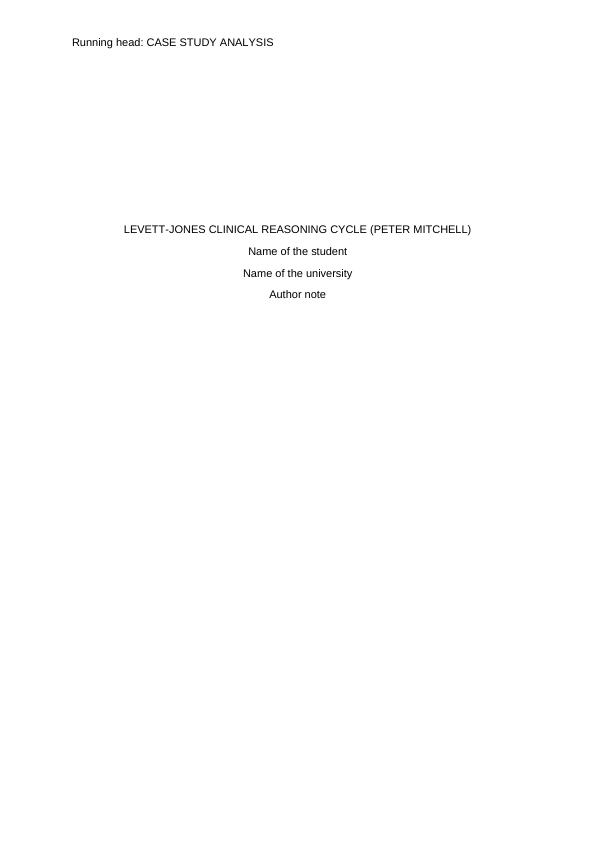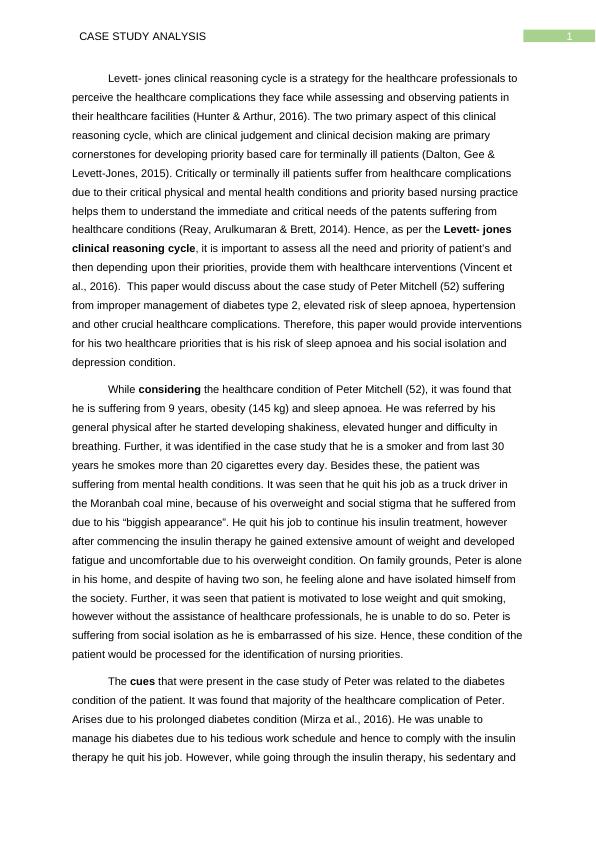Levett-Jones Clinical Reasoning Cycle: Case Study Analysis
This case study requires students to identify and discuss two priorities of care for patients with chronic conditions and apply the clinical reasoning cycle for justification.
8 Pages3125 Words78 Views
Added on 2023-01-17
About This Document
This paper discusses the case study analysis of Peter Mitchell using the Levett-Jones Clinical Reasoning Cycle. It explores the healthcare complications he faces and provides interventions for his priorities.
Levett-Jones Clinical Reasoning Cycle: Case Study Analysis
This case study requires students to identify and discuss two priorities of care for patients with chronic conditions and apply the clinical reasoning cycle for justification.
Added on 2023-01-17
ShareRelated Documents
End of preview
Want to access all the pages? Upload your documents or become a member.
Case Study Analysis: Nursing Priorities for Peter Mitchell
|9
|2829
|91
Case Study Analysis: Peter Mitchell
|7
|2692
|37
Case Study on Peter Mitchell
|7
|2527
|153
(PDF) Patients as Partners in Managing Chronic Disease
|9
|2508
|9
Sample Paper on Nursing (pdf)
|10
|2616
|142
Prioritization of Care for Patients with Chronic Health Conditions
|8
|2695
|43



